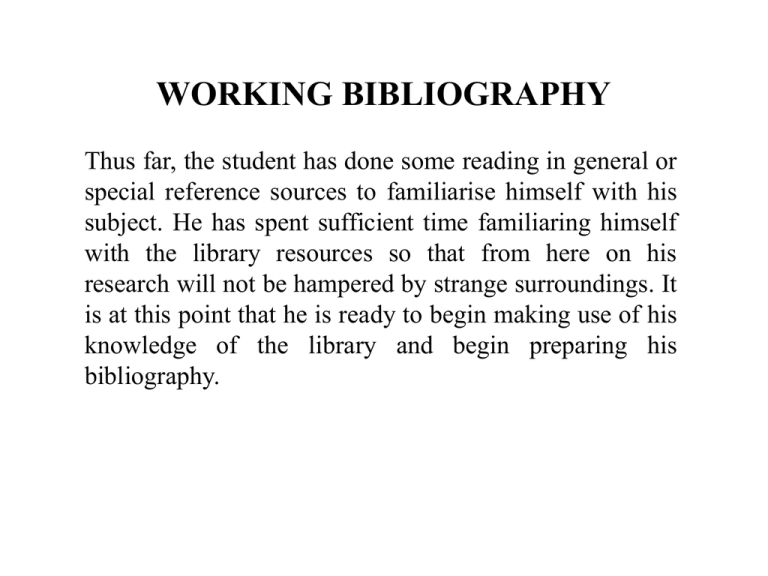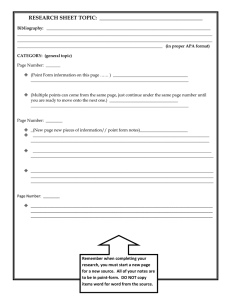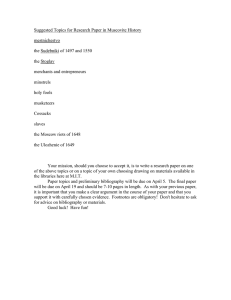WORKING BIBLIOGRAPHY
advertisement

WORKING BIBLIOGRAPHY Thus far, the student has done some reading in general or special reference sources to familiarise himself with his subject. He has spent sufficient time familiaring himself with the library resources so that from here on his research will not be hampered by strange surroundings. It is at this point that he is ready to begin making use of his knowledge of the library and begin preparing his bibliography. REASONS FOR A WORKING BIBLIOGRAPHY • Since research implies a thorough search of all available sources on a given topic, it is imperative that the student undertake a very careful and systematic search of the available sources and keep an orderly record of his search. This search cannot be a haphazard affair. The more organised the researcher is from the start, the more time he will save by avoiding unnecessary delay and repetition. • The working bibliography is just what the name implies: the bibliography that the researcher will be working with until his final draft has been submitted and accepted. In a sense, a working bibliography is never really completed, since at any time during the general preparation and taking of notes the student might discover additional sources which he will then add to his bibliography file. DEVELOPING A WORKING BIBLIGRAPHY • Because the research paper is a major project involving many papers and notes, organisation is crucial. That means keeping a copy of every abstract, article, and downloaded file with full publication information and the URLs of the Internet materials. Your final manuscript will require a bibliography page listing all your sources, so now is the time to start accumulating the data. • If you want to be fully arganised – and your instructor may require this – write as an ongoing project a working bibliography. This list of the sources may be kept on cards or, more efficiently, on a computer file. Either way, producing a set of bibliography entries has three purposes: DEVELOPING A WORKING BIBLIGRAPHY (2) • 1. It locates articles and books for notetaking purposes. • 2. It provides information for the in-text citations, as in this example in APA style: The healing properties of certain foods have been noted by Milner and Hasler (1995: 6-10). . 3. It provides information for the final reference page . If you keep entries current in a computer file, you can easily insert them into your Woeks Cited page at the end of your manuscript. DEVELOPING A WORKING BIBLIGRAPHY (3) • Whether you keyboard your sources or make handwritten cards for easy shuffling, each working bibliography entry should contain the following information – with variations, of course, for books, periodicals, and government documents: • 1. Author’s name • 2. Title of the work • 3. Publication information • 4. Library call number • 5. (Optional) A personal note about the location or contents of the source. • 6. The URL for the Internet sources.




